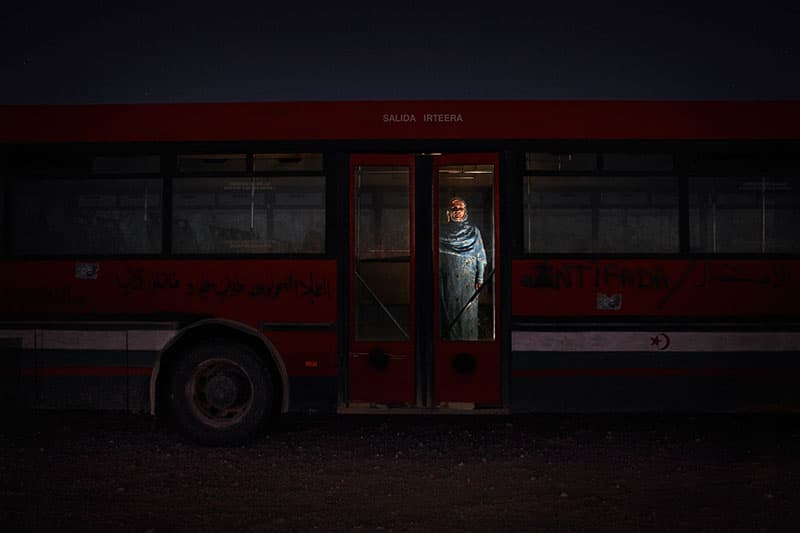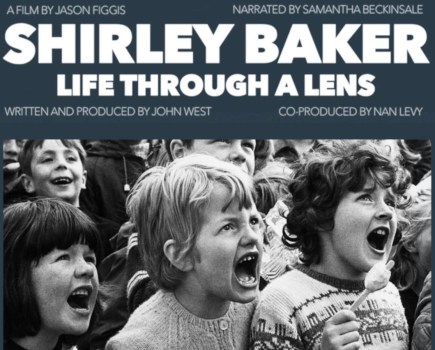Photo Insight with Andrew McConnell

Andrew McConnell began his career as a press
photographer covering the Troubles in his homeland of Northern Ireland,
but in 2004 switched to social documentary work, photographing around
the world. Much of his work features the Middle East and Africa. He has
won numerous awards, including Sony World Photography and World Press
Photo accolades, and his work has featured in publications such as
National Geographic Magazine, Newsweek, Time magazine, The New York
Times, The Guardian, Vanity Fair, The Sunday Times Magazine, L’Espresso
and Internazionale.
This image is part of a series called The Last Colony, which was shot in 2008 in the Western Sahara. Here, the indigenous Sahrawi people have been under constant occupation from various countries, most recently Morocco. Rebels have fought for independence for 37 years, and in 1991 they were promised a referendum on self-determination in return for a ceasefire. This referendum has so far not occurred and the Sahrawi people have been left in limbo. In the 1970s and ’80s, many of them fled to set up and live in refugee camps, which are situated in Algeria and Mauritania. To this day, they have no‘home’ country to go back to.
This political landscape influenced all the images in The Last Colony series and dictated how they were shot. When I first went out there I had no idea how I would shoot it, but very quickly the idea came to me: around 180,000 people are stuck in this inhospitable landscape and the world has forgotten they are there. I realised a regular reportage piece would not really communicate their plight effectively. Shooting at night, and lighting up the subject, was a simple yet effective way of saying, ‘Look, these people are here, they are forgotten, their issue is unknown, they have been left to rot in the desert for 37 years and they are like ghosts’. I wanted to emphasise that ghostly element.
This particular photo was taken among the sand dunes near one of the refugee camps in Tindouf, Algeria. The camps have a few buses that people can hire, or reserve, and on this occasion a group of young people took one to go and relax among the dunes at sunset – a popular pastime. I met the girl on the bus and it struck me that she and the bus would make a fantastic picture.
I liked the look of the bus, with the graffiti down the side and the word intifada’, which generally translates into English as ‘uprising’, ‘resistance’ or ‘rebellion’. It’s a word that’s particularly interesting in the context of the wider story. I positioned the girl in the door.
Compositionally, to have her in the right panel made more sense to me as it set her off-centre, which to my eye was more pleasing than if she had been in the other window. With the word intifada on the right your eye tracks right to left, and that gave a good balance to the photo.
The girl is lit using a small LED video light, specifically a Litepanel Micro. It is placed on a seat below her to her left in this image. I could control the light, so I could match it to the ambient light by making it brighter or dimmer. I shot the image over ten minutes. The sun was setting behind me, so I had to adjust my settings and the light accordingly to get the best result in the ambient light conditions.

My exposure here was around 1/5sec. For some of the other shots in the series, when it was further into the night and much darker, my exposure was as long as 20secs. It took me a long time to master the technique when I started. On my first trip, I had no tripod so could only shoot at the beginning of dusk when it was light enough to hold the camera by hand. A couple of images shot like this did make it to the final series, though, including one of a soldier with his gun at sunset. There was also a lot of trial and error in positioning the light and getting the right balance,so that the ghostly effect was just right. The LED lights are really common now, but back then they were quite new so it was a case of learning how best to use them.
On my second trip, during which this photo was taken, I brought a tripod- a tool that helped to widen my scope significantly. It meant I could shoot well into the night and it enabled me to capture some amazing images with the stars suspended in the sky. In this shot I am using the tripod, along with a Canon EOS 5D Mark II and a 24mm prime lens. I am fortunate that the setting sun is picking out the detail on the bus, while the woman is being singled out using the LED light. It means the whole image has a captivating level of detail.
The lack of a distracting reflection in front of her was luck. You can see reflections in the bus windows caused by the setting sun, but in her panel the LED light overpowers the sunlight so you have a clear portal through which to see her.
What you see is pretty much how it came out of the camera – there has been very little post-processing, apart from bringing the contrast down slightly and adjusting the colour balance to reduce the blue cast that was present on the image.
I’m really proud of this set of photographs, as it was important that the story was told in an effective and original way and I feel that the technique I used achieves that. Unfortunately, despite my best efforts, the refugees of the Western Sahara are still in limbo, waiting for the future of their country to be decided.
Andrew McConnell was talking to Jon Severs
To learn more about Andrew’s work, read our feature about his project Leaving Gaza in AP’s issue dated AP 13 July. Also visit www.andrewmcconnell.com







